Relevant Overviews
- Communication Strategy
- Content Strategy
- Knowledge4Policy
- Online Strategy
- Online Community Management
- Social Media Strategy
- Content Creation & Marketing
- Online Architecture
- Digital Transformation
- Change & Project Management
- Personal Productivity
- Innovation Strategy
- Communications Tactics
- Social Web
- Media
- Politics
- Communications Strategy
- Science&Technology
- Business
- Large language models
Overview: Knowledge4Policy
The EU Commission's Knowledge4Policy platform ("K4P") is recognised as one of the most powerful, innovative knowledge management and synthesis platforms on the EC's EUROPA site.
I was first asked to help the Joint Research Centre (or JRC, the Commission's in-house scientific department) with this project in 2017, when all they knew was that they needed to build an evidence-informed policymaking platform: a website designed to bring scientists and policymakers closer together to ensure European policy was informed by science.
There are very few audiences more different than scientists and policymakers, so I was doubtful. Fear not, they assured me, "a community site will bring these two worlds together".
Based on evidence
I was not assured. As the pioneer of EC-convened communities of practice, I was the obvious choice, so they were a little taken aback when I doubted that community features should be their first priority. To their immense credit they agreed to bring in some specialists to carry out detailed audience research into what both scientists and policymakers would want from such a platform.
The audience research - an online survey, 12 ethnographic interviews and three focus groups - was undertaken while we were building the alpha version, which went live in May 2018 with 6 publishing groups. As far as we know this research was unique (they asked their international partners several times), and has underpinned the platform's development ever since. It is available in full via the 3rd in a series of interpretative blog posts.
Innovative architecture
The JRC has more websites than the rest of the EC put together, so we knew from the outset that K4P's architecture would have to scale from 6 to 166 publishing teams. Three innovations form the framework upon which everything since has been built:
Powerful knowledge management
We needed to find a way to simultaneously categorise all scientific knowledge according to its relevance to EU policy and give our scientists the highly granular, domain-specific taxonomies they craved while avoiding an unusably huge taxonomy.

Knowledge4Policy: Structure & Future, April 2022
The solution was a two-layer taxonomic architecture, combined with separating the knowledge from the groups that created it. This was soon recognised as a model for knowledge management on EUROPA, and adopted for the EC's internal Sharepoint-based knowledge management.
Concise, credible knowledge syntheses
Policymakers are not going to use our clever taxonomic architecture to filter 2000 pieces of knowledge down to 15 scientific papers to download and read.
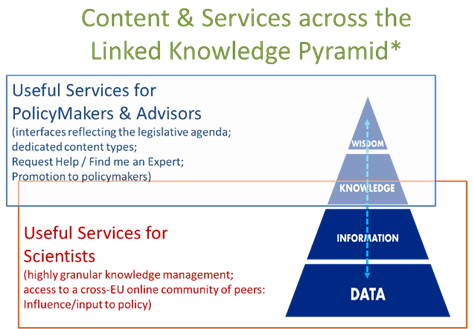
Knowledge4Policy: Structure & Future, April 2022
Instead, they need a set of specific "policylayer" interfaces, sitting atop our powerful knowledgebase, presenting policy-friendly syntheses of the science. Like the page you're reading now, these interfaces are zettleksten overviews: a searchable, filterable collection of knowledge, plus a synthesis of that collection.
Integrated communities & collaboration
The audience research showed that many scientists but fewer policymakers would use community features, so they took a backseat until the above features were in place. When we did launch the first knowledge community, our priority was to avoid the "empty forum syndrome" so common to public sector communities.

Knowledge4Policy: Structure & Future, April 2022
Instead, we integrated the community members and their conversations right inside the knowledgebase. This avoids creating people silos - even if two Members joined different publishing groups, they would meet in discussions of the knowledge, which exists separately from the groups. Adding collaboration features to the basic community feature set is now a major focus.
Mutually reinforcing
Although the above sounds like two separate websites welded together at the hip, we've managed to integrate these three pillars so they support each other:
- scientists see their knowledge being reflected in the policylayer, giving them confidence that joining the community to contribute their science is worthwhile
- policymakers see the scientists in the community and the science behind each synthesis, reinforcing their confidence in it.
Scaling up
More publishing teams joined K4P steadily until 2024, when the JRC recognised the strategic opportunity the platform offered.
While it was initially designed for "Knowledge Services" (internal teams combining not only knowledge creation but also curation and synthesis), it is now being progressively opened up to more publishers of greater diversity. New features have been developed to support them, along with a revamped training system and a highly structured site migration programme.
In parallel, the JRC invested in the central team, hiring (for the first time) specialised editorial support and design services, and adding management layers.
The process of migrating new publishers continue, while behind the scenes we are connecting the K4P knowledgebase to the internal GPT@JRC platform, planning AI services for editors and users, and adding collaborative tools to the knowledge communities.
Read more
Check out the Building knowledge for policy Featured Topic maintained by the Evidence-informed policymaking knowledge service, plus the various resources tagged #k4p below, where the stuff I Like is relevant to the project but not associated with it, and the Stuff I Think and Do is content I've written myself to provide more detail.
Relevant resources
"I rarely work for the same client for more than a year or two - generally enough to help them figure out their strategy, pilot and demonstrate it, and set up the team to mainstream it. But I make an exception for the Joint Research Centre"A few slides, repurposed for LinkedIn, setting out "some of the key innovations underpinning the Knowledge4Po…
"Transformation Maps... help users to explore and make sense of the complex and interlinked forces ...transforming economies, industries and global issues... insights written by experts along with machine-curated content... allows users to visualise and understand more than 250 topics and the connections and inter-dependencies between them... to s…

Asks: could LLMs be used to "create tools that sift and summarize scientific evidence for policymaking... [for] knowledge brokers providing presidents, prime ministers, civil servants and politicians with up-to-date information on how science and technology intersects with societal issues... [who must] nimbly navigate ... millions of scientific pa…
While my focus at the European Commission's Joint Research Centre has been on their Knowledge4Policy platform (K4P), I've recently been pulled in to help design their internal communications, community, collaboration & knowledge management strategy as they grapple with migrating from Jive to M365.
we could, and should, be better at collective memory, collective thinking, and collective intelligence... level up from an oral culture that thinks big thoughts but doesn't do much else together
Via FotL I discover "Canonical Debate Lab (CDL)... researchers, developers, and system thinkers who have independently been working on collective intelligence systems for several years... goal is to aggregate contributions of diverse stakeholders into a unified information space, which can be accessed through multiple views... tailored to a specif…
"Hitting “publish” on this, my first blog post on Knowledge4Policy (K4P), is a special moment for me. I’ve helped create a few online communities for the European Commission (I launched my first in February 2002, so I just missed that particular anniversary), but K4P may be the most important."
advice on how to bring science to the attention of policymakers... dedicated to researchers and research organisations aiming to achieve policy impact... advice on new skills and practices for individual researchers, but also ... institutional change ... puts co-creation at the centre of Science for Policy 2.0, a more integrated model of knowledg…
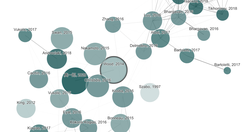
unique, visual tool to help researchers and applied scientists find and explore papers relevant to their ... work... analyze ... ~50,000 papers and select the few dozen with the strongest connections to the origin paper.... arranged according to their similarity... papers that do not directly cite each other can be strongly connected and very clo…
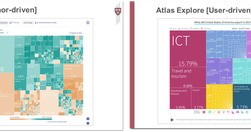
Our scientists are publishing sophisticated data visualisations for policymakers to use. But are policymakers using them? ... I interview Annie White and Nil Tuzcu of Harvard’s Growth Lab about their use of data visualisations for policymaking... summarise the resulting guidance we’re giving Knowledge4Policy publishers.

Informing Knowledge4Policy with an Understanding of our Political Nature - exploring on Medium what “Understanding our Political Nature”, a recent EU study into knowledge, reason and policymaking, has to say about how the Knowledge4Policy platform could (should?) evolve.

We’re about to start testing new online designs to make scientific evidence more accessible to policymakers. Volunteers needed! - recruiting wireframe testers via K4P

“It’s not that pretty” we hear every other day. Possibly. But what’s important: building something beautiful, or something usable?- published on the K4P Publication on Medium

Celebrating a small milestone for the K4P project on Medium.
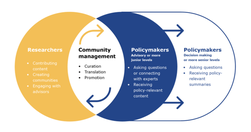
Latest on the K4P Medium Publication

the Knowledge Pyramid... DIKW pyramid, it features data as the basis and shows how information is built on it, then knowledge, and finally wisdom.... implies that the higher you go the better things get... What’s not to like? Well, just about everything.
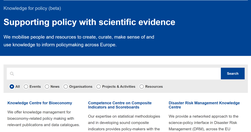
May, 2018: the EU Commission’s cross-EC Knowledge4Policy platform for evidence-based policymaking goes live in Beta mode.
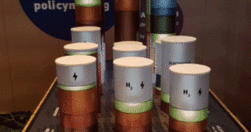
"Our day in Strasbourg buttonholing passing MEPs could not have been more different than the two hour focus group we held with scientists a couple of weeks earlier. Which is entirely appropriate" - second report from K4P audience research."a dozen diverse “vignettes” of audience needs and user stories... helped answer a lot of our questions: what …
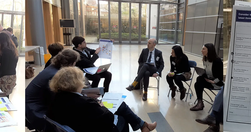
"“Policymakers seem to need answers yesterday,” reflected the young scientist from Italy. “That’s the direct opposite of how science works.”" - first report from the K4P audience research.The key finding from me was that scientists want to see their work taken up by policy, but seem at a loss on how. A platform which was explicitly built around ma…
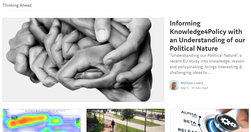
Managing a Medium Publication to share our the journey as we build Knowledge4Policy: "share our experiences … as transparently as possible, and invite ideas and perspectives from experts in evidence-based policymaking around the world"
Relevant Overviews
- Communication Strategy
- Content Strategy
- Knowledge4Policy
- Online Strategy
- Online Community Management
- Social Media Strategy
- Content Creation & Marketing
- Online Architecture
- Digital Transformation
- Change & Project Management
- Personal Productivity
- Innovation Strategy
- Communications Tactics
- Social Web
- Media
- Politics
- Communications Strategy
- Science&Technology
- Business
- Large language models